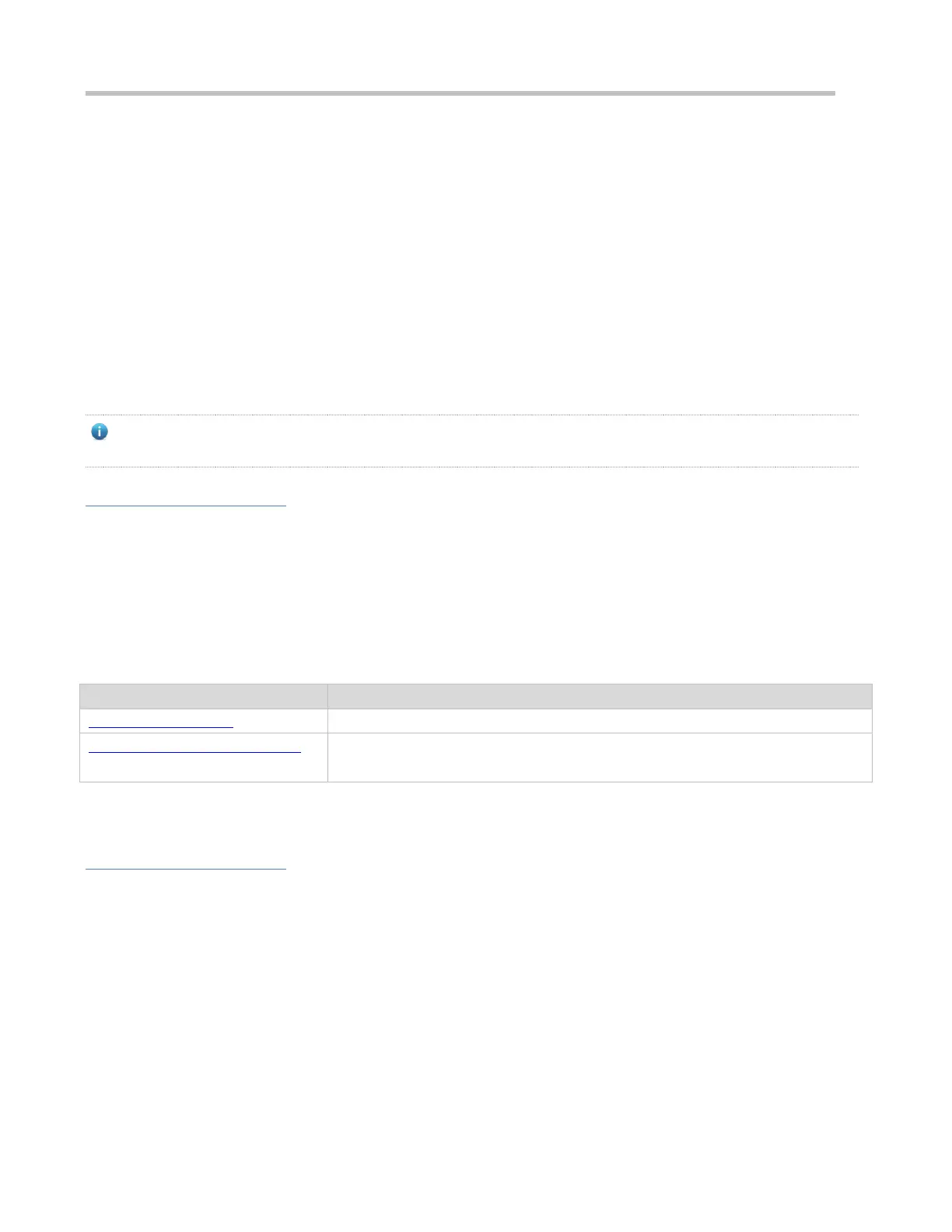Configuration Guide Configuring MAC Address
2 Configuring MAC Address
2.1 Overview
A MAC address table contains the MAC addresses, interface numbers and VLAN IDs of the devices connected to the local
device.
When a device forwards a packet, it finds an output port from its MAC address table according to the destination MAC
address and the VLAN ID of the packet.
After that, the packet is unicast, multicast or broadcast.
This document covers dynamic MAC addresses, static MAC addresses and filtered MAC addresses. For the
management of multicast MAC addresses, please see
Configuring IGMP Snooping Configuration
.
Protocols and Standards
IEEE 802.3: Carrier sense multiple access with collision detection (CSMA/CD) access method and physical layer
specifications
IEEE 802.1Q: Virtual Bridged Local Area Networks
2.2 Applications
Forward unicast packets through MAC addresses learning.
MAC Address Change Notification
Monitor change of the devices connected to a network device through MAC address
change notification.
2.2.1 MAC Address Learning
Scenario
Usually a device maintains a MAC address table by learning MAC addresses dynamically. The operating principle is
described as follows:
As shown in the following figure, the MAC address table of the switch is empty. When User A communicates with User B, it
sends a packet to the port GigabitEthernet 0/2 of the switch, and the switch learns the MAC address of User A and stores it in
the table.
As the table does not contain the MAC address of User B, the switch broadcasts the packet to the ports of all connected
devices except User A, including User B and User C.
